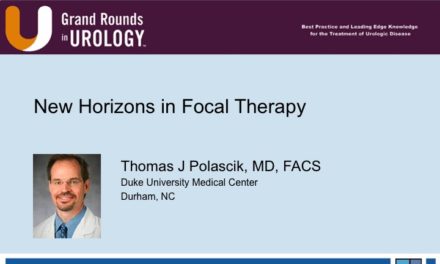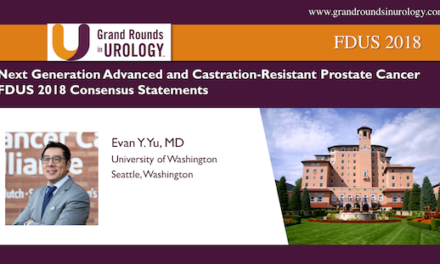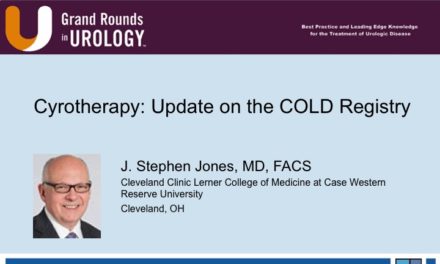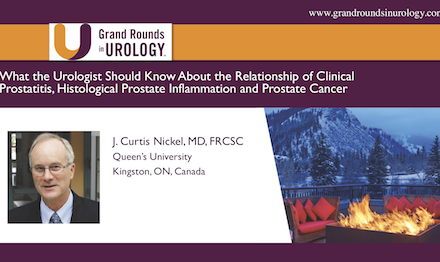Lawrence I. Karsh, MD, FACS, presented “SpaceOAR Hydrogel – Prostate-Rectum Spacing in Radiation Therapy“ at the International Prostate Cancer Update on January 27, 2018 in Beaver Creek, Colorado.
How to cite: Karsh, Lawrence I. “SpaceOAR Hydrogel – Prostate-Rectum Spacing in Radiation Therapy” January 27, 2018. Accessed Dec 2024. https://dev.grandroundsinurology.com/spaceoar-hydrogel/
SpaceOAR Hydrogel – Prostate-Rectum Spacing in Radiation Therapy
Summary:
Lawrence I. Karsh, MD, FACS, discusses the use of SpaceOAR Hydrogel to reduce risk of rectal complications and improve quality of life (QOL) outcomes when treating prostate cancer with radiation therapy. He also summarizes supporting clinical evidence, describes the physical application of the gel, and lists players currently offering coverage for the procedure.
The Need for Prostate-Rectum Spacers
While radiation therapy is one of the most common treatments for prostate cancer, it can too often lead to devastating urinary, gastrointestinal, and sexual complications. Due to the rectum’s proximity to the prostate, rectal radiation is inevitable without preventative measures. Radiation toxicity in the rectum can cause bleeding, urgency, pain, fistulas, and QOL loss. Consequently, the rectum becomes a radiation dose-limiting factor. However, creating a space between the prostate and the rectum would alleviate these issues.
SpaceOAR Hydrogel
SpaceOAR Hydrogel is a substance made of mostly water and polyethylene glycol (PEG). It can create an approximately 1.3cm barrier between the prostate and the rectum. This barrier reduces the radiation exposure to the anterior rectum during prostate cancer treatment. As a result, the risk of rectal complications decreases, and clinicians are able to offer higher radiation doses.
Application
Clinicians apply the liquid hydrogel into the perirectal fat, between the rectal wall and the Denonvilliers’ fascia, through an 18G transperineal needle. The gel solidifies within ten seconds. Afterward, the gel spacer lasts about three months. It safely absorbs into the body after six months.
According to a United States Pivotal study, clinicians rated the application process 99% “easy” or “very easy.” Correspondingly, there was a 99% rate of technical success. In other words, SpaceOAR Hydrogel was proven to be a safe, effective, and well-tolerated procedure that places minimal stress on the clinician.
ABOUT THE AUTHOR
Lawrence I. Karsh, MD, is a Co-Founder of The Urology Center of Colorado, where he serves as an attending urologist and Director of Research & Co-Chairman of the Advanced Therapeutic Clinic. He is a certified principal investigator, and has been the principal investigator on over 250 clinical trials. He has authored a number of peer-reviewed publications and serves on the editorial boards for Oncology Live, Urologists in Cancer Care, and Bladder Cancer. He is a fellow of the American College of Surgeons, and an active member of the AUA, SUO, ASCO, SWOG, ACS, and the Denver Academy of Surgeons. He has served on the bladder cancer subcommittee and the advisory board for the SUO Clinical Trials Consortium and is a member of the Bladder Cancer Advocacy Network (BCAN) Think Tank.
Dr. Karsh completed his general surgery training at the University of Colorado Health Sciences Center (UCHSC) and his urology residency at Brigham and Women’s Hospital/Harvard Medical School. He is an Associate Clinical Professor of Surgery at UCHSC. Dr. Karsh participates in many advisory boards for new drug development. He lectures and teaches at scientific meetings throughout the country.





